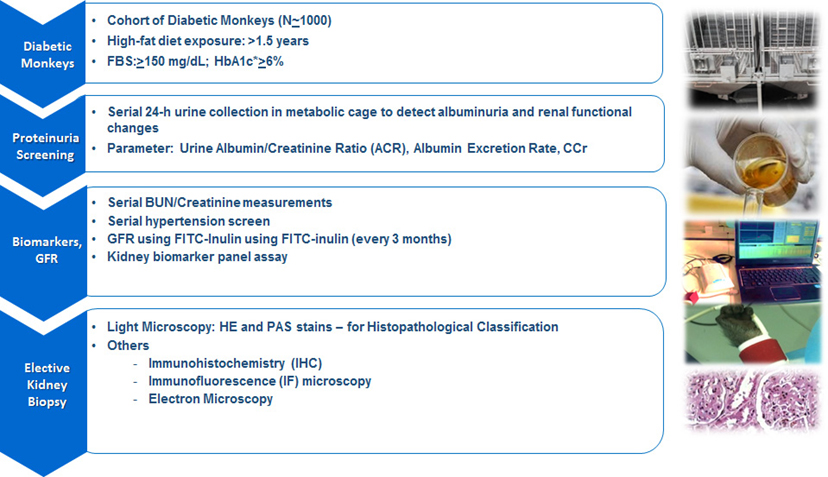Kunming, China, August 10, 2023
Chronic kidney disease (CKD) including diabetic nephropathy (DN) occurs in approximately 20-40% of the type 2 diabetes (T2D) global population. At KBI, our cynomolgus monkey models of CKD and DN closely resemble all the characteristics of these diseases in humans and they have been successfully used to evaluate the new drugs for this disease.

Fig 1. Screening process to identify diabetic nephropathy in cynomolgus monkeys at KBI.

Fig 2. Use of albuminuria/creatinine ratio (ACR), glomerular filtration rate (GFR), fluorescein isothiocyanate-inulin (FITC-inulin) and for the identification of CKD in cynomolgus monkeys. Morphological lesions from renal biopsy are classified in accordance with the International Pathologic Classification of Glomerular Changes in Diabetic Kidney Disease (J Am Soc Nephrol 21:556-63,2010).
Contact us if you need more information.